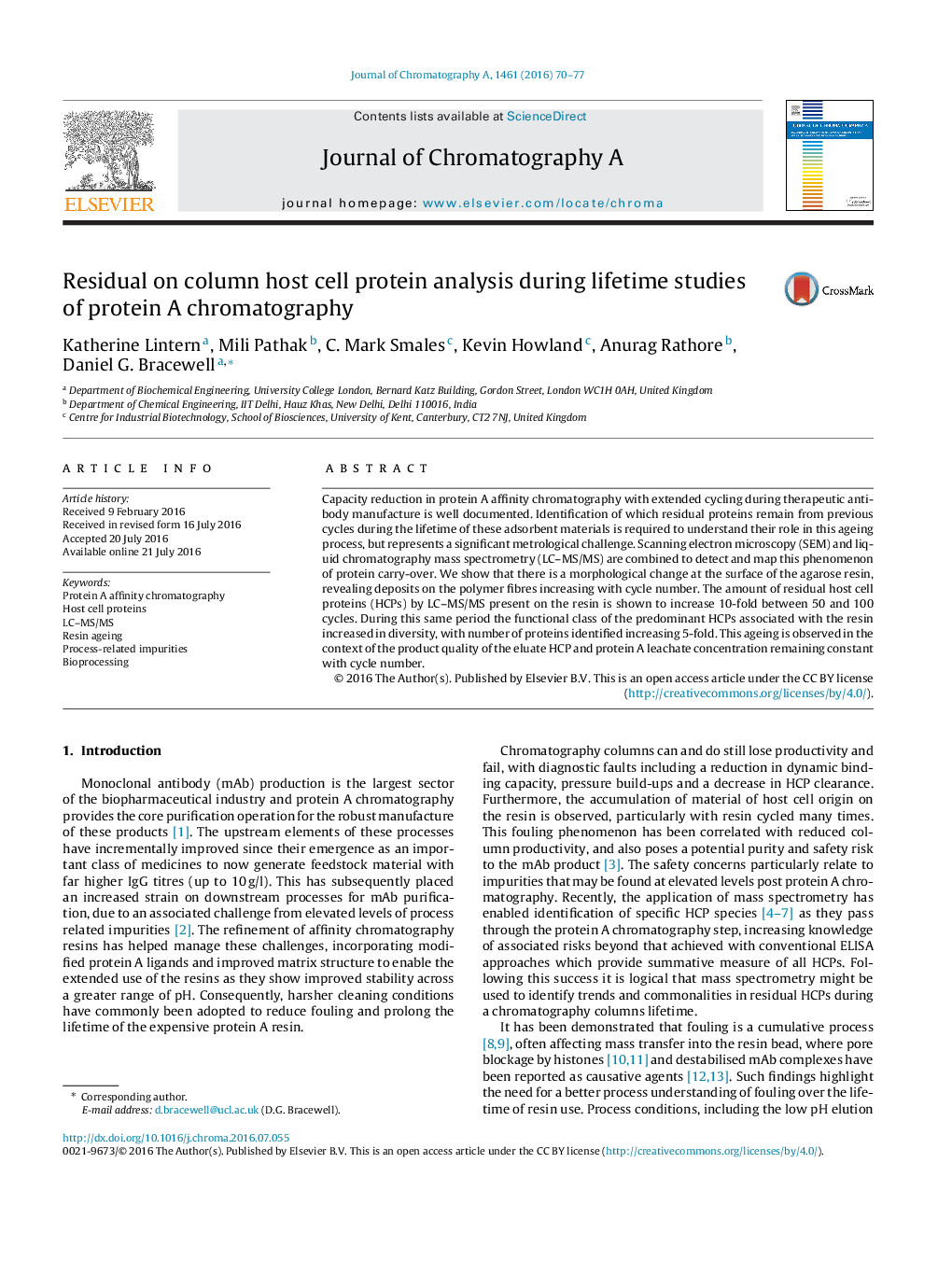| Article ID | Journal | Published Year | Pages | File Type |
|---|---|---|---|---|
| 7609899 | Journal of Chromatography A | 2016 | 8 Pages |
Abstract
Capacity reduction in protein A affinity chromatography with extended cycling during therapeutic antibody manufacture is well documented. Identification of which residual proteins remain from previous cycles during the lifetime of these adsorbent materials is required to understand their role in this ageing process, but represents a significant metrological challenge. Scanning electron microscopy (SEM) and liquid chromatography mass spectrometry (LC-MS/MS) are combined to detect and map this phenomenon of protein carry-over. We show that there is a morphological change at the surface of the agarose resin, revealing deposits on the polymer fibres increasing with cycle number. The amount of residual host cell proteins (HCPs) by LC-MS/MS present on the resin is shown to increase 10-fold between 50 and 100 cycles. During this same period the functional class of the predominant HCPs associated with the resin increased in diversity, with number of proteins identified increasing 5-fold. This ageing is observed in the context of the product quality of the eluate HCP and protein A leachate concentration remaining constant with cycle number.
Keywords
Related Topics
Physical Sciences and Engineering
Chemistry
Analytical Chemistry
Authors
Katherine Lintern, Mili Pathak, C. Mark Smales, Kevin Howland, Anurag Rathore, Daniel G. Bracewell,
